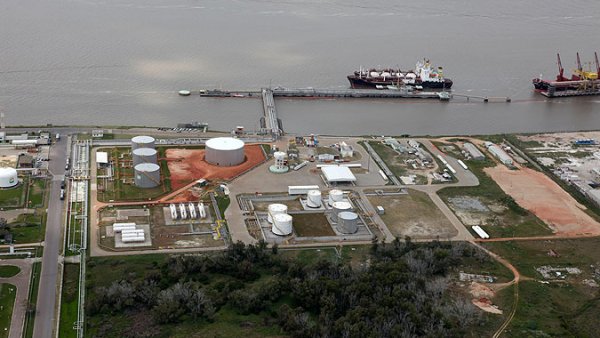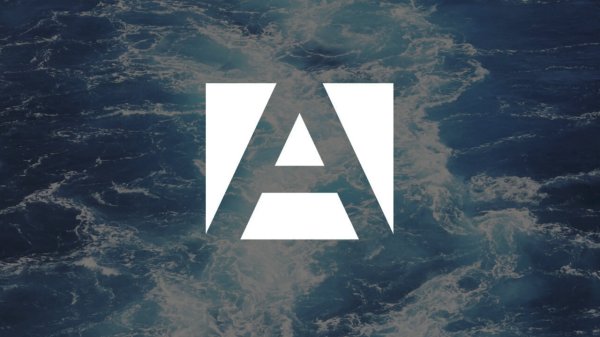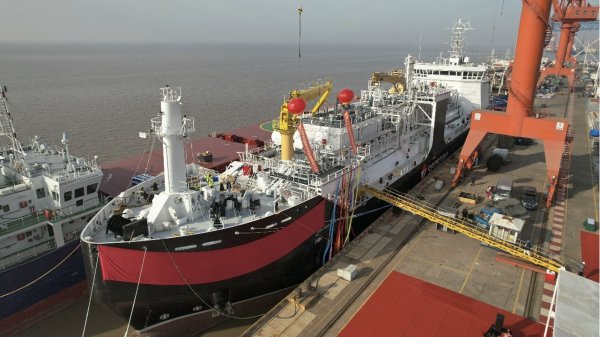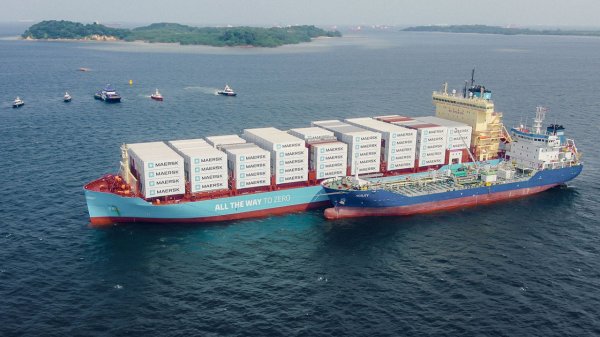Marine fuel emissions data released
New report provides statistical analysis of CO2 emissions from international marine fuels.
The International Energy Agency (IEA) has released a new report which includes detailed statistical analysis of CO2 emissions from international marine fuels.
The document, entitled "CO2 Emissions from Fuel Combustion - Highlights (2009 Edition)" aims to provide helpful information on emissions in the run up to UN climate negotiations in Copenhagen at the end of this year.
The annual publication contains:
* CO2 emissions from international marine and aviation bunkers, and other relevant information
* estimates of CO2 emissions by country from 1971 to 2007
* selected indicators such as CO2/GDP, CO2/capita, CO2/TPES and CO2/kWh
Please find below a summary of CO2 emissions from international marine bunkers and the world (in million tonnes of CO2) contained in the document.
Year Marine / World
1971 344.5 / 14,617.1
1975 328.6 / 16,160.4
1980 344.0 / 18,660.7
1985 291.7 / 19,304.5
1990 356.9 / 21.474.1
1995 402.0 / 22,067.2
2000 466.0 / 23,758.5
2004 521.7 / 26,807.5
2005 549.7 / 27,600.3
2006 580.6 / 28,446.3
2007 610.4 / 29,320.5
According to the report CO2 emissions from international marine bunkers has increased by 71.1 percent since 1971, whilst global emissions have risen by 36.5 percent. The document says shipping currently accounts for 2 percent of the world's CO2 emissions.
These estimates have been calculated using the IEA energy databases and the default methods and emission factors from the Revised 1996 IPCC Guidelines for National Greenhouse Gas Inventories.
The report can be downloaded free in PDF and Excel format by clicking on the links below:
PDF Document / Excel Document
"The latest information on the level and growth of CO2 emissions, their source and geographic distribution will be essential to lay the foundation for a global agreement," the IEA said.
The document, entitled "CO2 Emissions from Fuel Combustion - Highlights (2009 Edition)" aims to provide helpful information on emissions in the run up to UN climate negotiations in Copenhagen at the end of this year.
The annual publication contains:
* CO2 emissions from international marine and aviation bunkers, and other relevant information
* estimates of CO2 emissions by country from 1971 to 2007
* selected indicators such as CO2/GDP, CO2/capita, CO2/TPES and CO2/kWh
Please find below a summary of CO2 emissions from international marine bunkers and the world (in million tonnes of CO2) contained in the document.
Year Marine / World
1971 344.5 / 14,617.1
1975 328.6 / 16,160.4
1980 344.0 / 18,660.7
1985 291.7 / 19,304.5
1990 356.9 / 21.474.1
1995 402.0 / 22,067.2
2000 466.0 / 23,758.5
2004 521.7 / 26,807.5
2005 549.7 / 27,600.3
2006 580.6 / 28,446.3
2007 610.4 / 29,320.5
According to the report CO2 emissions from international marine bunkers has increased by 71.1 percent since 1971, whilst global emissions have risen by 36.5 percent. The document says shipping currently accounts for 2 percent of the world's CO2 emissions.
These estimates have been calculated using the IEA energy databases and the default methods and emission factors from the Revised 1996 IPCC Guidelines for National Greenhouse Gas Inventories.
The report can be downloaded free in PDF and Excel format by clicking on the links below:
PDF Document / Excel Document
"The latest information on the level and growth of CO2 emissions, their source and geographic distribution will be essential to lay the foundation for a global agreement," the IEA said.

|
VARO Energy expands renewable portfolio with Preem acquisition
All-cash transaction expected to complete in the latter half of 2025. |
|
|
|
||

|
NYK trials biofuel in milestone coal carrier test
Vessel is used to test biofuel for domestic utility company. |
|
|
|
||

|
H-Line Shipping orders LNG bunkering vessel
Vessel with 18,000-cbm capacity to run on both LNG and MDO. |
|
|
|
||

|
How to engineer and manage green shipping fuels | Stanley George, VPS
Effective management strategies and insights for evolving fuel use. |
|
|
|
||

|
Swedish government bans scrubber wastewater discharges
Discharges from open-loop scrubbers to be prohibited in Swedish waters from July 2025. |
|
|
|
||

|
MAN Energy Solutions achieves 100% load milestone for ammonia engine
Latest tests validate fuel injection system throughout the entire load curve. |
|
|
|
||

|
Petrobras secures ISCC EU RED certification for B24 biofuel blend at Rio Grande
Blend consisting of 24% FAME is said to have been rigorously tested to meet international standards. |
|
|
|
||

|
Stolt-Nielsen to fully control Avenir LNG with acquisition
Share purchase agreement to buy all shares from Golar LNG and Aequitas. |
|
|
|
||

|
Bureau Veritas supports launch of CIMC SOE's LNG bunkering vessel
Handover of Seaspan Energy's cutting-edge 7,600-cbm vessel completed. |
|
|
|
||

|
Methanol as a marine fuel | Steve Bee, VPS
How environmental legislation has driven the development of low-sulphur fuels and methanol-ready ships. |
|
|
|
||
Related Links
- · Report documents low sulphur fuel usage [Insights]
- · EU to propose 20% emissions cut [Insights]
- · Associations back cap and trade scheme [Insights]
- · Study reveals effect of ships on ground-level ozone [Insights]
- · France [Directory]

